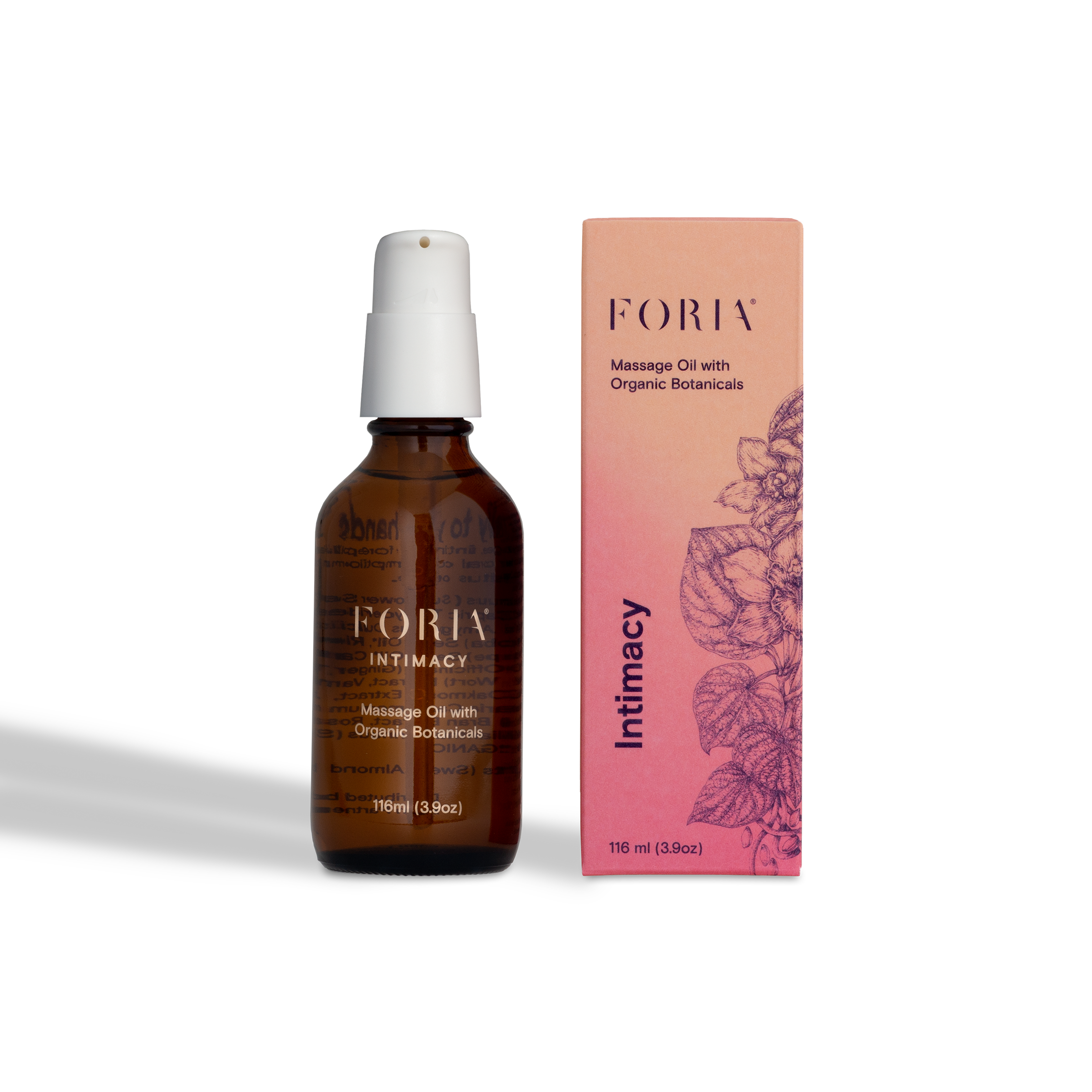Talk Pleasure to Me with Karen Martinot
An Honest Intimacy Conversation with Karen Martinot, board-certified women’s health nurse practitioner and Director of Programs & Clinical Administration at Affirm.
Talk Pleasure to Me is our series where we talk to experts on sex, relationships, and caring for your body (& mind) so you can get inspired on your pleasure journey and learn from the best.
Karen Martinot, DNP, WHNP-BC, IBCLC (she/her) earned a doctorate in nursing practice from Arizona State University and is a board-certified women’s health nurse practitioner. She completed her undergraduate work in biology and nursing in Oregon at Willamette University and Oregon Health and Sciences University, respectively. She also is an internationally board-certified lactation consultant. Her clinical experience includes wellness care, gynecology, preconception care, contraception care, prenatal care, postpartum care, and lactation consulting. Her research experience addresses the intersection of reproductive health and recovery from substance use disorder. She is a regular lecturer in ASU's DNP program. She focuses on the client experience of care to empower people to experience sexual and reproductive wellness. She is committed to developing and overseeing programs and projects that are evidence-based, respectful, and affirming.
We chatted with Karen about all the types of birth control and how to find the best option for you. She answers common questions like, “What’s the difference between hormonal and non-hormonal birth control?” and “Are there risks if my period stops on the pill?” Plus, she walks us through common side effects and benefits, myths, and even new options like Opill (hello, over-the-counter birth control!). Whether you’re just getting curious or ready to talk with your provider — you’re going to learn a lot from this blog post.
First, can you share more about what you do and how you work with Affirm?
I serve as the Director of Programs and Clinical Administration at Affirm Sexual and Reproductive Health. In this role, I oversee a statewide network of Title X clinics, manage grants and quality improvement initiatives, and work closely with partners to expand access to high-quality sexual and reproductive health care across Arizona.
I’m also a board-certified women’s health nurse practitioner (with a doctor of nursing practice degree) and am an internationally board-certified lactation consultant (IBCLC), so I bring both clinical, program leadership, and educational perspectives to my work.
A lot of what I do is help health clinics turn medical research into everyday care that feels approachable and supportive for patients, like making conversations about birth control options open and non-judgmental. I also work with health center partners to put strategies in place that address rising rates of syphilis, congenital syphilis, and other STIs. And I coach providers on building person-centered care, making sure people feel heard and supported when they’re in a health center environment.
What I love most about working with Affirm is that we meet people where they are. We focus on ensuring that every person has access to high-quality, respectful care and the information they need to make decisions that feel right for them.
Can you walk us through the different types of hormonal birth control options?
There are really two main categories of hormonal birth control. One contains only a progesterone-like hormone, and the other combines both a progesterone-like hormone and an estrogen-like hormone. Hormonal birth control works by giving your body a steady, controlled dose of hormones.
Think of it like setting the thermostat in your house. Your natural hormones rise and fall across the month, creating a cycle. Birth control flattens out those fluctuations by keeping hormone levels steady. That steady signal is what prevents ovulation and keeps the uterine lining thin.
Progesterone-only methods:
- The implant placed under the skin of the arm
- Hormonal IUDs (intrauterine devices - there are many different types of iuds)
- Progestin-only pills (sometimes called the “mini-pill”)
- The Depo shot, an injection given every three months.
Combination methods (estrogen + progesterone):
- Pills taken daily
- A birth control patch worn on the skin and replaced weekly
- A vaginal ring that’s placed in the vagina and changed monthly
Can you walk us through the different types of non-hormonal birth control options?
Non-hormonal options are quite varied, and they give people choices that don’t rely on added hormones.
Fertility awareness–based methods (FAB): Understanding how the body signals fertility and choosing whether to have sex during the fertile window. Some people use an app; others prefer a paper calendar or a string of “cycle beads.”
Lactational amenorrhea method (LAM): Can work for up to six months after a baby is born if a parent is exclusively breastfeeding and hasn’t yet resumed their period.
Barrier methods: Condoms, diaphragms, and cervical caps.
Spermicides: Placed in the vagina before sex.
Copper IUD: a highly effective long-acting option that uses copper rather than hormones.
Is there one best birth control pill or device, or do you recommend different birth control depending on a person’s body/needs?
There isn’t one single “best” type of birth control because people’s needs and circumstances are unique. The best one takes into account your personal medical history and also considers your personal preferences and priorities.
How should someone decide which option might be best for them?
Deciding which birth control option is right for you works best when it’s a shared process. Your provider brings expertise about medical safety and how the different methods work, and you bring expertise about your own body, your lifestyle, and what matters most to you. Together, you can find the right fit.
Some people want a method that changes how their periods come, while others want something completely private. Some prefer methods they can start or stop on their own, while others like the convenience of a device placed by a provider that they don’t have to think about day-to-day. Effectiveness is very important to some, while for others it’s just one part of the bigger picture. And of course, we all have personal quirks—some people dislike shots, others don’t want a patch on their skin.
What’s most important is that your provider truly listens, respects your preferences, and gives you enough information so that you can make the choice that’s right for you.
Are there different types of IUDs?
Yes, there are several types of IUDs both globally and in the United States. In the U.S., the FDA has approved two main categories: the hormone-free copper IUD and several types of hormonal IUDs that contain a progesterone-like hormone. The hormonal versions differ slightly in size and the amount of hormone they release.
It’s also good to know that IUDs can be used by adolescents and adults even into their menopausal years. The hormonal IUDs often lighten or even stop periods, making them a great option for managing heavy or painful cycles.
Each birth control also comes with its own side effects, do some kinds of birth control have more side effects than others?
Yes, every birth control method has its own side effects, and some have more than others. When talking about side effects, I think it’s helpful to frame them in three categories:
Positive or beneficial effects: A decrease in skin oil production (can improve blemishes and act as a hormonal acne treatment); thinning of the uterine lining (can relieve painful or heavy periods).
Bothersome but not dangerous effects: Spotting, mild nausea, subtle shifts in libido.
Adverse effects: Rare but important to know about; can signal a serious problem and require medical attention right away. Ask your provider to go over warning signs and when to reach out.
When choosing a method, it helps to talk with your provider not just about the risks, but also about the benefits you might gain, and how to tell the difference between a nuisance side effect, something you don’t want to tolerate, and an adverse effect that needs immediate care.
Can you explain progestin-only birth control and its benefits/risks?
Progestin-only birth control works in a few different ways. First, it suppresses ovulation, meaning no egg is released. Second, it thins the lining of the uterus, often leading to lighter or absent periods. Third, it thickens the cervical mucus, which makes it harder for sperm to enter the uterus in the first place.
Progestin-only birth control is a flexible group of options. It includes methods like the “mini-pill,” the birth control implant in the arm, hormonal IUDs, and the shot. These range from short-term daily choices to some of the most effective long-acting methods available.
One of the big advantages of this group is that they don’t contain estrogen. Not everyone can safely use estrogen, based on things like blood pressure, migraines, or other medical history, so progestin-only options open the door for many more people.
Most people can safely use something from this category. The main question is which option fits best with your health history and preferences, whether that’s something you can start and stop on your own, or a “set it and forget it” method that lasts for years.
Many women also swear by hormonal birth control as what helps with period cramps or what lightens their heavy periods — some of my friends haven’t gotten their period in years due to their birth control. Are there any risks associated with not getting your period due to birth control?
The good news is that it is not risky to your health if your period stops while you’re using a hormonal birth control method. This is a common point of confusion, because many of us grew up hearing that it’s important to have a monthly period for overall health. And that’s true if you’re not on any medication; if you’re skipping periods without birth control or having irregular periods, that’s something to report to a healthcare provider.
Here’s why: the lining of the uterus (the endometrium) should not grow unchecked. If it gets too thick and doesn’t shed, it can increase the risk of abnormal cell growth, including cancerous changes. Hormonal birth control reduces that risk in one of two ways. Some methods trigger the lining to shed regularly, giving you a light monthly bleed. Others keep the lining thin so there’s nothing to shed.
So, if your period stops while on hormonal birth control, it simply means the lining isn’t building up, it’s not dangerous, and for many people it’s a welcome benefit. Periods should not stop when using non-hormone methods like condoms, the copper IUD, or a diaphragm.
Many people also wonder “does birth control makes you gain weight?” Is weight gain a common side effect of birth control?
This is a very common concern, and the evidence suggests that weight gain is not a common side effect of most birth control methods. There is one exception: the Depo shot (the injection given every three months). Research shows it can be associated with modest weight gain in some people, likely because it increases appetite. It's good to note that some patients prefer this method for that reason. People with low appetite or difficulty maintaining body weight may find the shot helps them eat better and feel healthier. Again, it’s so important to give context to conversations about what is a “pro” or “con” of a method as this is varies by people’s preferences: this is not a “good, better, best” situation.
For other birth control methods, research evidence does not show a pattern of weight gain across users. Weight is influenced by many things, growth and maturation in adolescence and young adulthood, lifestyle changes like moving away to college, or shifts in eating habits when starting a new relationship.
It’s also worth restating that weight gain isn’t always a “problem.” For some, it may even be a desired effect. That’s why shared decision-making with a provider is so important, so the method you choose matches your health needs, your preferences, and your overall goals.
What are some other reasons people take birth control other than preventing pregnancy?
Birth control methods are often used as medicines for reasons separate from pregnancy prevention. Common uses include:
- Treating painful periods and heavy menstrual bleeding
- Managing endometriosis symptoms
- Lowering risks associated with PCOS
- Reducing functional ovarian cysts
-
Lowering the risk of ovarian, endometrial, and colorectal cancers
- Protecting against bone loss
- Improving fibrocystic breast symptoms
- Treating acne and unwanted hair growth on the face or body
- Reducing PMS
- Easing perimenopausal symptoms
How quickly can fertility return after stopping birth control?
With most methods, fertility returns immediately or within about a week of stopping. The one exception is the Depo shot (progestin-only injection), which can take several months to wear off before fertility returns to baseline.
This is why it’s helpful to talk with your provider about your pregnancy preferences. If you know you might want to conceive soon after stopping birth control, you may want to avoid methods like the birth control shot that take longer to wear off.
What types of birth control should postpartum or breastfeeding parents consider?
The right birth control after having a baby really depends on your priorities. If protecting your milk supply is your main concern, the safest bet is to stick with non-hormonal methods. However, if your milk supply is well established (usually around six weeks), most experts agree that progestin-only options such as the “mini-pill,” the hormonal IUD, or the implant, won’t negatively affect breastfeeding. Estrogen-containing methods (like the pill, patch, or ring) are generally used with more caution while nursing because they can sometimes interfere with milk supply.
At the same time, it’s worth remembering that closely spaced pregnancies can carry health risks, so finding a method that works for your body and your goals is important. Your provider can walk through these options with you and help you decide what feels right. And, as a lactation consultant, I have to plug that meeting with a lactation consultant can be very helpful in these discussions to personalize recommendations according to your breastfeeding plans and experiences.
It’s also good to know about the option of immediate postpartum IUD placement. If you plan, your delivery provider can insert an IUD right after birth, within 10 minutes, in the delivery room or while still in the OR after a cesarean. This option is appealing to those who want an IUD but don’t want a separate office procedure later. And with the joyful distraction of holding your newborn for the first time, most people hardly notice the IUD placement at all.
Another option in the postpartum period is the lactational amenorrhea method (LAM), which is about 98% effective when three criteria are met: your baby is under six months, you haven’t resumed your period, and you’re exclusively breastfeeding day and night. It’s important to note that this method relies on the baby’s mouth on the breast; pumping doesn’t trigger the same hormonal response, so LAM isn’t considered reliable if pumping is the primary method. A good lactation consultant can be great support for a person wanting to prevent closely spaced pregnancy using LAM.
I just heard about Opill birth control option, which is the first over-the-counter birth control, can you tell us more about that?
Yes! It’s exciting that we now have the first birth control option where someone can buy it without a prescription at their local pharmacy or, even, online! Opill is not a new medicine. It is a progestin-only pill with a trusted formula that has been used safely for decades. Because of its excellent safety profile and decades of data, the FDA approved it for over-the-counter use in 2024.
People run into all kinds of hurdles when trying to get birth control — insurance delays, clinic backlogs, or just the reality of juggling work, childcare, and everything else. That’s where Opill can be a game changer; it means no gaps in protection if you run out, no waiting weeks for an appointment, and no worrying about whether your insurance will cover it. For a lot of people, it’s a low-stress way to stay on birth control.
Have there been any other new types of birth control or exciting advancements in recent years that you can tell us about (EG: the birth control ring)?
Yes, a few newer options are worth highlighting:
- Slynd: a progestin-only pill designed to reduce breakthrough spotting and with a 24-hour grace window for missed pills (instead of just 3 hours).
- Annovera: a reusable vaginal ring that lasts for up to a year, offering convenience without repeated pharmacy visits.
- Phexxi: a hormone-free vaginal gel that changes the vaginal pH to reduce sperm mobility and survival; can be used alone or alongside other methods like condoms or pills.
What are the options for birth control for men? Can you tell us about the male birth control pill?
Right now, the main options available to men, and others who produce sperm, are condoms and vasectomy. Condoms are widely available, hormone-free, and provide protection against both pregnancy and sexually transmitted infections. Vasectomy is a minor surgical procedure that’s permanent and extremely effective.
The so-called “male pill” isn’t on the market yet, though research is ongoing into hormonal pills, gels, and injections for people who produce sperm. None have been FDA-approved, but the progress is promising. For now, condoms and vasectomy remain the two reliable options.
Are there any myths or misinformation about birth control you’d like to clear up?
Definitely. There are a lot of myths about birth control and its link to infertility on social media right now. I recommend exercising caution about information from social media or anecdotal stories and follow up with reputable sources and providers who can walk you through the nuances behind the chatter. Be cautious about information coming from someone trying to sell you something.
I want to be clear though, social media can be awesome to raise the voices of many and effect change. For example, conversations on social media helped providers identify that people needed better pain management options for IUD placements, and that has had a positive impact on medical practices and provider training. Now it is recommended for providers to discuss options to make the procedure more comfortable: these options include listening to music and other pleasant distractions, numbing the cervix with local anesthesia, offering pills to reduce anxiety, and even the use of nitrous oxide or “laughing gas”. For people who would prefer to be sedated, that is even an option, but sedation requires a special setting, it cannot be done in a general clinic.nmThere is reputable information online that is free from commercial bias. One of my preferred sites is Bedsider.org. They have an Instagram account as well with informative posts.
What advice would you give to someone who feels overwhelmed by all the choices?
First of all, if you’re feeling overwhelmed, you’re not alone. There really is a lot to process. One gentle first step is to spend a little time journaling about what matters most to you in this decision. Having your own priorities written down makes it easier to stay grounded during conversations with your provider.
It may also help to bring a trusted friend, partner, or family member with you to an appointment. A second set of ears can catch things you might miss and give you someone to continue the conversation with afterward.
It can be helpful to look at the birth control options side by side. Affirm runs a site with a birth control method finder where you can compare the various options. Check that out on www.sexfyi.org (site available in English & Spanish). Your provider may also have printed materials to help you compare your options.
And remember, you don’t have to decide in one visit. Most providers are happy to schedule a counseling-only session and then a follow-up appointment when you’re ready. Taking extra time is perfectly normal. The most important thing is that you feel confident and supported in your choice.
Another thing to keep in mind is that you don’t have to stick with a method you are not enjoying. It is okay to stop a method and try something different. Some people have compared this to trying on jeans, sometimes it takes a few tries to find a good fit.
Wanna be interviewed for this series?
The Foria Practitioner Program is accepting applications from professionals with expertise in women’s health who wish to recommend Foria products to their clients and professional network To be part of the practitioner program, please apply to our affiliate program. Learn more and apply.
Shop Our Bedside Favs
Want more? Sign up for our newsletter
By entering your email, you are agreeing to our terms and conditions and understand our privacy policy.













